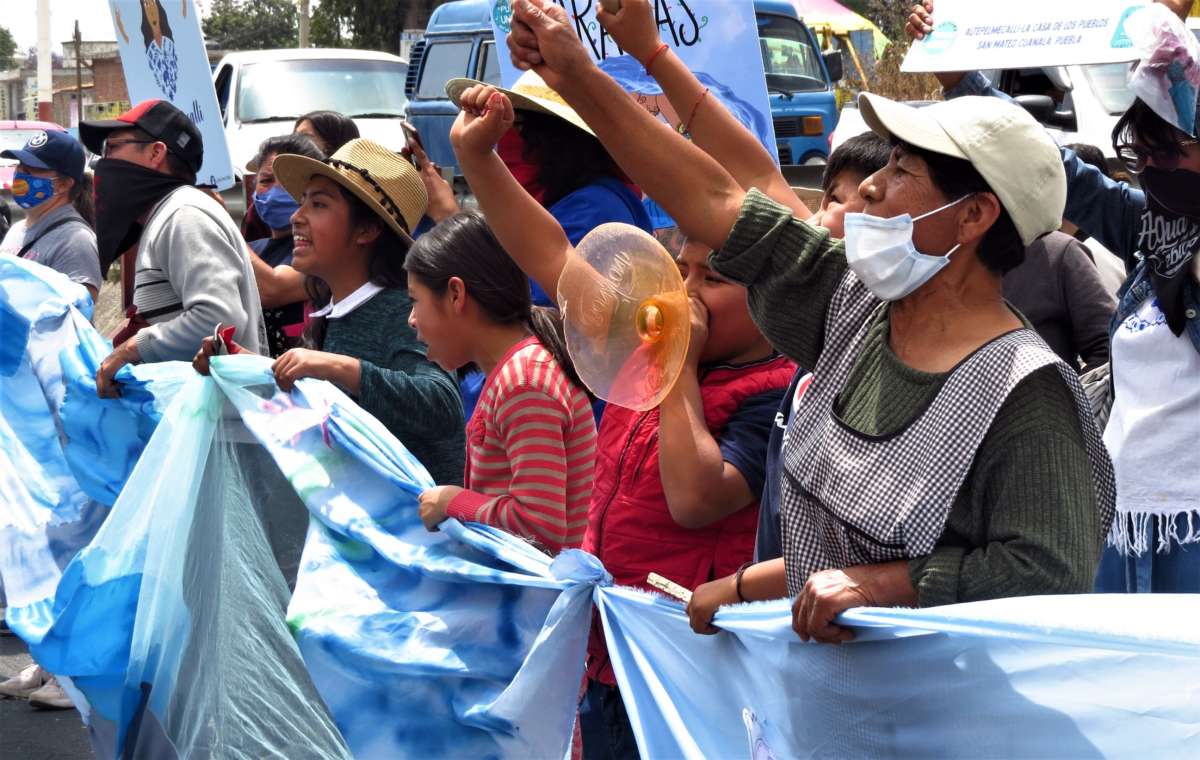Mexico is heading into the worst months of its dry season. Fifteen of 32 states are experiencing extremely high stress on water resources, as use surpasses the amount available.
Water rights activists use the term “Day Zero” for the date when a region will lack sufficient water to meet basic needs. Much of Mexico is close to this point, with Monterrey and Nuevo Leon only having two months of water reserves, and Mexico City two years. For comparison’s sake, England has been described as being in the “jaws of death” because its Day Zero is 25 years away.
Activists with the Indigenous Caravan for Water and Life argue that it is multinational corporations, often with governmental support, that are responsible for causing climate change, environmental damage and water shortages — rather than the regular dry season.
“It’s not a drought, it’s looting” has been one of the main chants of the month-long caravan which kicked off in Puebla on March 22, and will run until April 24.
The caravan, one of the biggest demonstrations in recent years of Indigenous people’s defense of the environment, will cover nine states and visit Indigenous communities across Mexico each day for 34 days. These communities are standing up for their environmental rights and autonomy. Most are confronting megaprojects, where manufacturing, mining, extractive and commercial companies — often from the U.S. or Europe – have built massive amounts of infrastructure, such as hydroelectric plants and gas pipelines, to plunder the communities of their water and energy resources.
In Puebla state alone, hundreds of corporations have licenses to build or maintain such infrastructure, which many local residents refer to as “death projects” because they threaten the existence of nearby communities. The hydroelectric plants that are built to provide mines with energy deprive nearby farmers of water. There are fracking zones and gas pipelines, and most supportive infrastructure is also privately owned, with corporate interests at heart and no community consultation. Areas with the highest concentration of such projects, such as Serdán and northern Puebla state, also have the highest levels of organized crime.
Mexico has the highest amount of carbon emissions from electricity of any country in Latin America. In Cuautlancingo, Puebla, for example, where Volkswagen and the industrial park, Finsa, is located, at least 80 percent of electricity use is industrial. Companies like Volkswagen, Ternium, Heineken and Dr. Pepper are also among the main users of water in Puebla state.
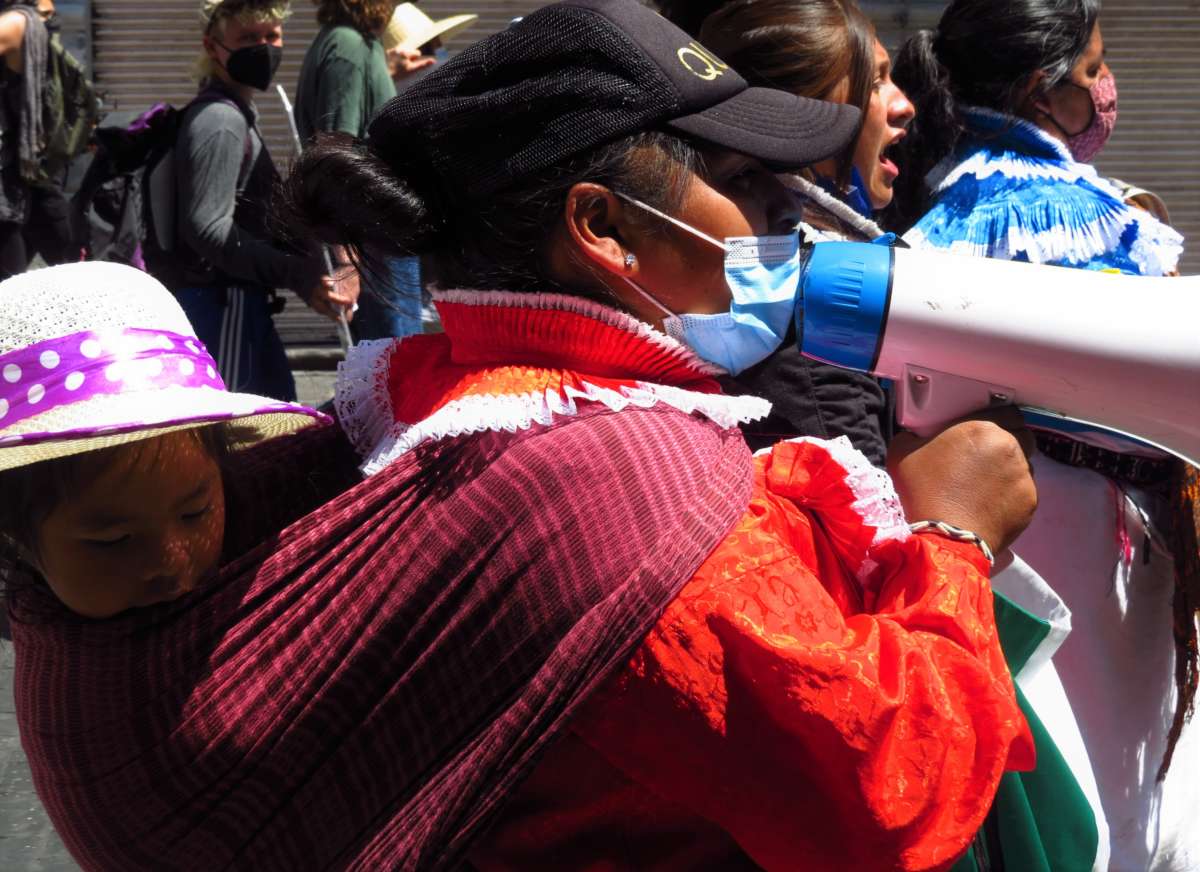
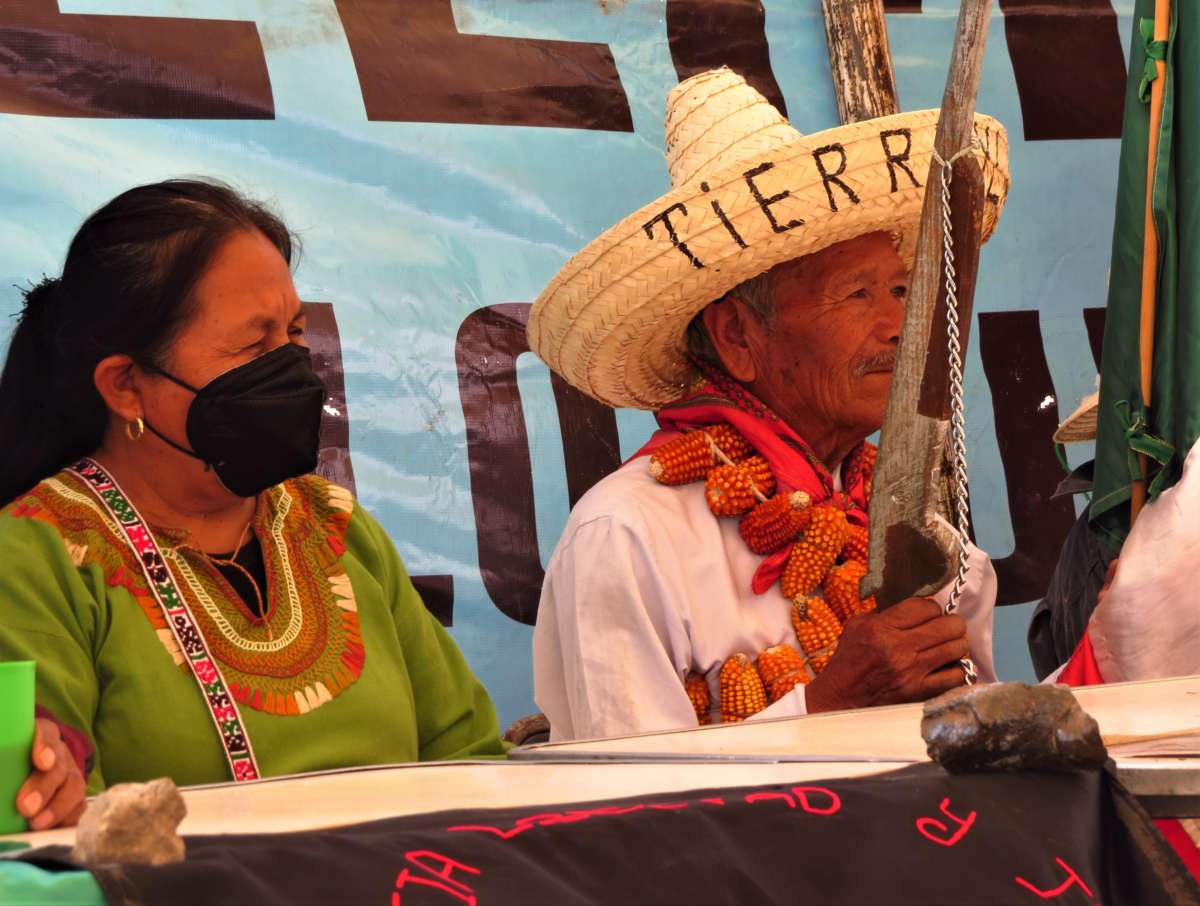
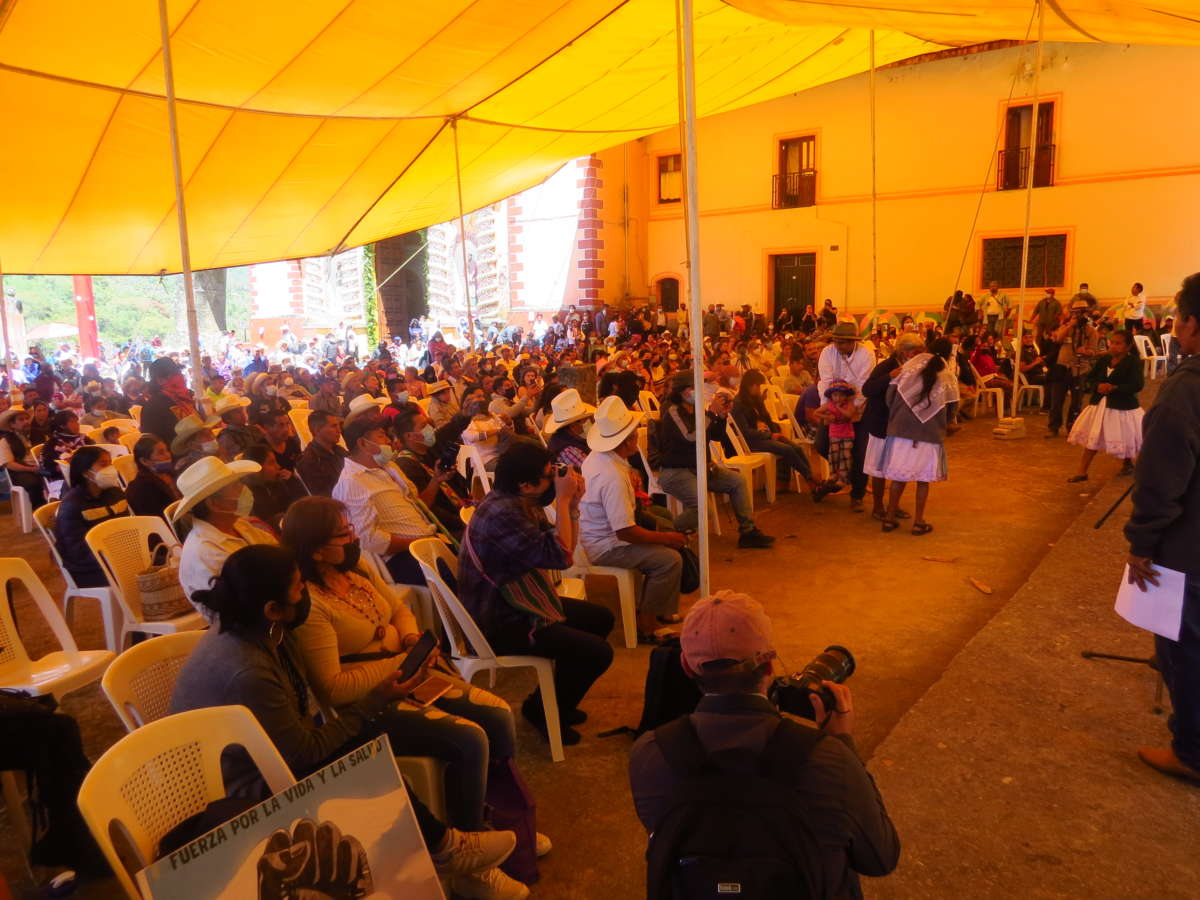
These mega projects disproportionately affect Indigenous people, said María de Jesús Patricio, widely known as Marichuy, who is a spokesperson for the National Indigenous Council (CNI) and the first female Indigenous presidential hopeful in the country.
From the way Indigenous people farm, to the deterioration of their lands, to the stealing and contamination of their water, the mega projects affect “what they eat, and therefore their health. They are modifying the environment, polluting the … rivers, and modifying farming cycles. And they cause internal divisions in the communities, by winning over some members with donations and telling them that the mega projects will bring employment,” Marichuy told Truthout from a bus during the caravan.
Mega projects also often involve displacing entire Indigenous communities, and the loss of important natural, cultural or religious sites. Across Mexico, some 4,200 dam construction projects have forced 185,000 people, mostly poor or original peoples, to leave their homes.
The violence against the land is reflected in the violence against people defending it. Last year, 25 such activists were murdered, with 238 total violent attacks recorded — making it the most violent year since 2014, when the Mexican Center for Environmental Rights (CEMDA) began keeping a tally.
Uniting Isolated Struggles
The caravan around Mexico is showing people that “our problems are similar … communities are seeking ways to walk together and denounce all the different types of plundering,” Marichuy said.
For the launch, the caravan held a press conference and marched outside Bonafont, a water bottling plant that is owned by Danone. Local Nahua peoples had taken over the plant last year, but were evicted by the military in February.
The bottling plant is now guarded by security forces in full battle gear, with a wall of 20-liter water bottles and two steel fences to prevent Indigenous locals from returning. The group’s march past the plant was brief. Otomis, who had joined the caravan from Mexico City, shouted, “Water is not for sale. No more armed forces in our towns.”
The next day, the caravan traveled to San Miguel Xoxtla, a nearby region that European steel company Ternium is turning to dust.
“The small farmers in the area denounced the pollution of air, land and water by the company. Its toxic waste and ashes are spewed out over the land. The wind hits you in the face and it smells very bad. The company consumes millions of liters of water — we don’t know how much exactly because there’s no transparency,” Armando Gomez, an Otomi member of the caravan, told Truthout. He said they also visited other towns and struggles nearby, and described how his clothing and shoes were full of dust because the area, which was previously fertile land, is so dry now.
Ternium’s excessive use of water is leaving locals without, and the runoff from its manufacturing processes is polluting a canal and one of the three main wells in Xoxtla that supplies water to people’s homes. The canal also passes through locals’ corn, bean and zucchini farms, contaminating their crops. Residents have denounced an increase in cancer cases and deaths since Ternium (then Hylsa) began operating. Last year, for the first time during the rainy season, the nearby Prieto River was completely dry, thanks to water use by Ternium.
After a march in Puebla city to protest outside the state parliament, as well as visits to other communities in the state, such as San Isidro Huilotepec, where locals are trying to stop a gas pipeline, the caravan headed to Ahuacatlan in the Sierra Norte mountains on March 27.
There, Totonaco and Nahua people, along with other Mexicans, celebrated what they called “partial victories.” They have managed to stop a mega project which involved building a hydroelectric dam for a Walmart, Suburbia, and other shops that would have left them without water for their crops. Communities in the region have also been organizing for years to shut down open-pit gold mines owned by Canadian company, Almaden Minerals, and another which is part of the Espejeras project. The mines have destroyed thousands of hectares of forest and contaminated domestic water with cyanide used to separate gold from other minerals. Fifty towns also face water shortages due to hydroelectric dams redirecting water to the gold mines.
At the event, activists read out a statement, affirming, “In February and March, after seven years (of resistance), the courts canceled five mining concessions in Ixtacamaxtitlán, Cuetzalan, Tlatlauquitepec and Yaonáhuac.”
A few days later, while in Chilapa, Guerrero, the caravan denounced the organized criminal group, Los Ardillos, for deploying 50 vans and 20 motorcycles in the path of the Indigenous activists. Media and human rights groups were on high alert, and the caravan was on guard all night. Community police accompanied the caravan until it arrived in Mexico City to continue its journey.

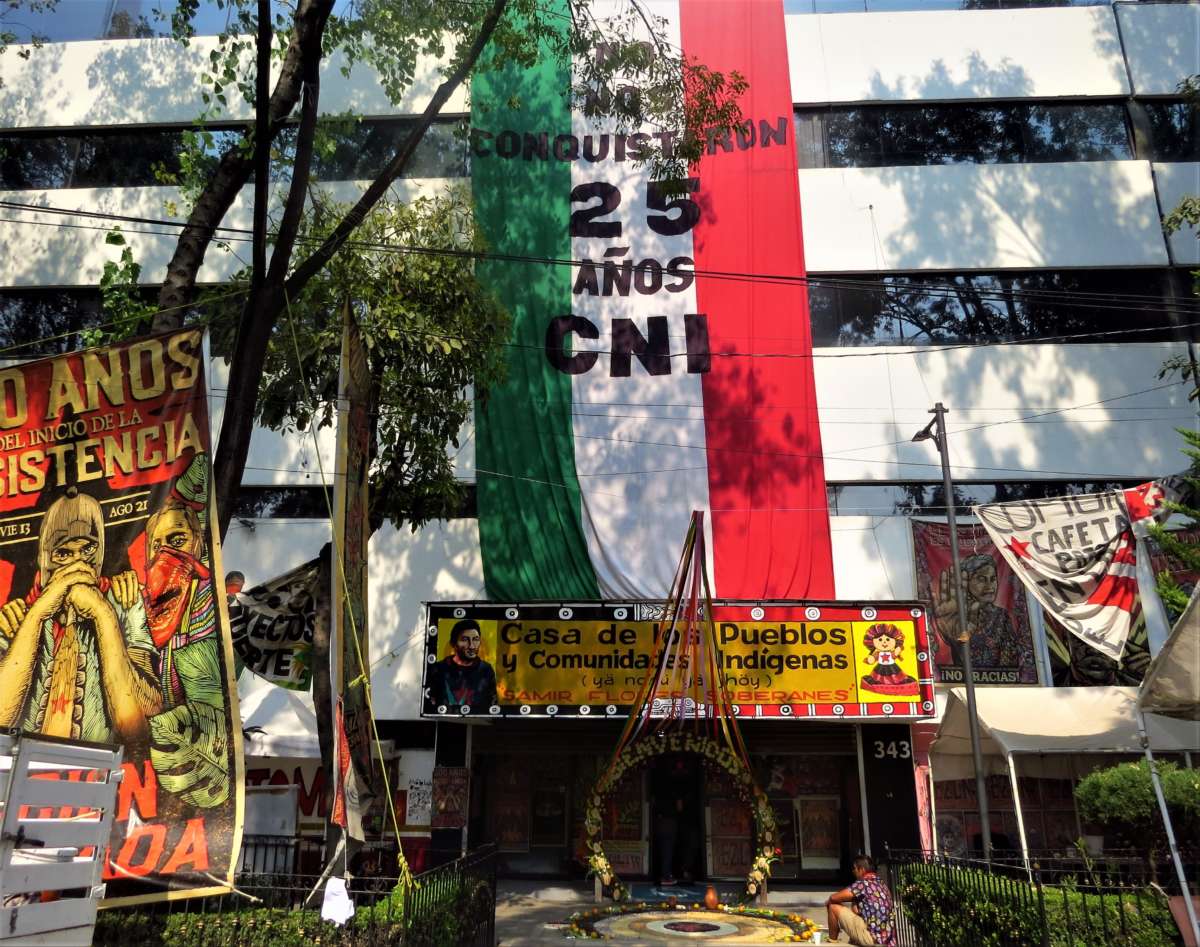

There, the caravan held a public meeting in the House of the People and Indigenous Communities — a five-story building formally used by the National Institute of Indigenous Peoples (INPI), a federal agency. On October 12, 2020, Otomí people in Mexico City took over the building, and have been running it ever since. They argued that the INPI betrays Indigenous people, and that the institute is indifferent to their needs. For instance, over 100 Otomis have spent years trying to meet the bureaucratic requirements of the INPI and other government agencies in order to claim some abandoned buildings to live in. In the meantime, they had been living in the street. When the pandemic began, the INPI threw out three years of permits and requests, forcing the Otomis to start again. They say the INPI uses their symbols and art, such as the Otomi dolls, while refusing to defend their rights.
In Mexico City, mining, food, entertainment, and other companies consume 850 times more water than households on average, and are a major contributor to water shortages. On April 7, the caravan visited Xochimilco, in the south of the city, where Indigenous people used to farm using a chinampa system, which consists of built-up islands among the huge lakes and canals. For the last century, that water has been sent to Mexico City, leaving local farmers and residents without.
“The canals are drying up; natural water has been replaced with low-quality treated water; the fish we used to eat are gone. We haven’t benefited in any way from supplying the city with water, and we’ve never been consulted. As original peoples, we have to defend our land, our resources, and our self-determination,” Silvia Cabello Molina, a local autonomous council representative, told Truthout.
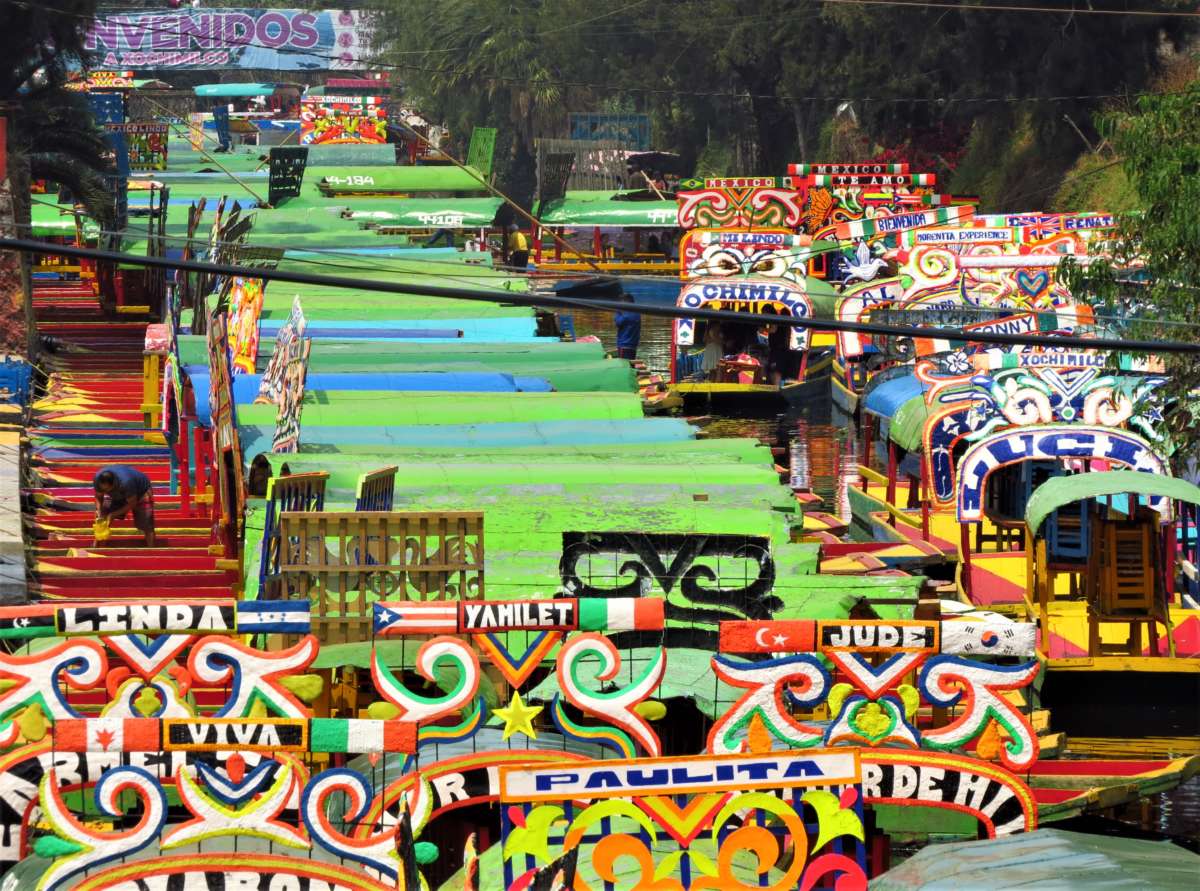
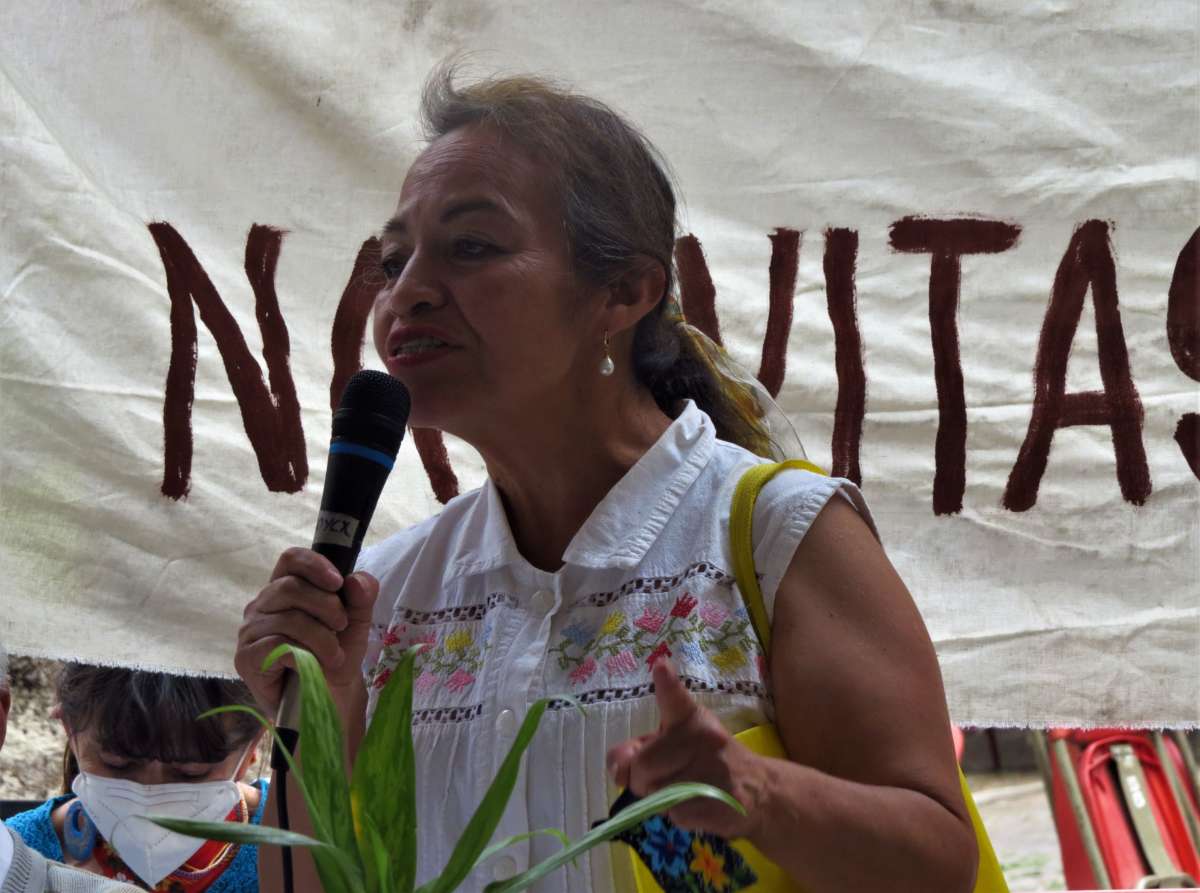
From Coca-Cola’s illegal water extraction in Apizaco, to privatized water in Puerto de Veracruz, the map of struggles that the caravan has visited and will visit is a detailed one.
The caravan “is a message that (original) peoples are bringing to other peoples and communities, suburbs, organizations. As they go, they bring the message that it is important to struggle, to organize in order to defend water, and life … and that together, it’s possible to stop all this,” Marichuy said. “If communities can’t strengthen their self-determination and autonomy, they leave a space for the mega projects to continue their destruction.”
We’re not backing down in the face of Trump’s threats.
As Donald Trump is inaugurated a second time, independent media organizations are faced with urgent mandates: Tell the truth more loudly than ever before. Do that work even as our standard modes of distribution (such as social media platforms) are being manipulated and curtailed by forces of fascist repression and ruthless capitalism. Do that work even as journalism and journalists face targeted attacks, including from the government itself. And do that work in community, never forgetting that we’re not shouting into a faceless void – we’re reaching out to real people amid a life-threatening political climate.
Our task is formidable, and it requires us to ground ourselves in our principles, remind ourselves of our utility, dig in and commit.
As a dizzying number of corporate news organizations – either through need or greed – rush to implement new ways to further monetize their content, and others acquiesce to Trump’s wishes, now is a time for movement media-makers to double down on community-first models.
At Truthout, we are reaffirming our commitments on this front: We won’t run ads or have a paywall because we believe that everyone should have access to information, and that access should exist without barriers and free of distractions from craven corporate interests. We recognize the implications for democracy when information-seekers click a link only to find the article trapped behind a paywall or buried on a page with dozens of invasive ads. The laws of capitalism dictate an unending increase in monetization, and much of the media simply follows those laws. Truthout and many of our peers are dedicating ourselves to following other paths – a commitment which feels vital in a moment when corporations are evermore overtly embedded in government.
Over 80 percent of Truthout‘s funding comes from small individual donations from our community of readers, and the remaining 20 percent comes from a handful of social justice-oriented foundations. Over a third of our total budget is supported by recurring monthly donors, many of whom give because they want to help us keep Truthout barrier-free for everyone.
You can help by giving today. Whether you can make a small monthly donation or a larger gift, Truthout only works with your support.
